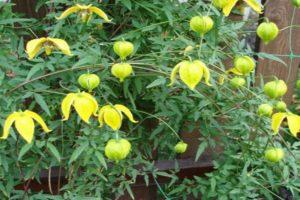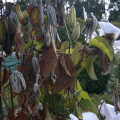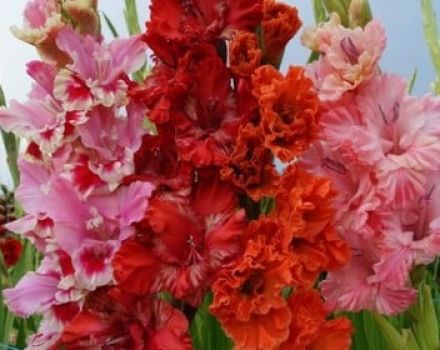Description and characteristics of clematis varieties Nelly Moser, planting and care
This flower belongs to the Patens group. The use of Clematis Nelly Moser is common in the design of gazebos, house walls and other vertical elements. It looks good when decorating arches. This Clematis was bred over a hundred years ago in France.
Description and features
Clematis nelly moser has been around since 1897. Its vine can be up to 3.5 meters long. One of the characteristic features is the ability to form shoots intensively. In one season, their number can reach 17 pieces. The gap between them is 18 centimeters.
The leaves that grow in the first ten of them have a complex shape. They are tee-shaped, and the size reaches 21 centimeters. Further, leaves grow, which have a simple shape. Their length does not exceed 11 centimeters.
Clematis Nelly Moser has a powerful branched root.
Buds appear on those shoots that arose in this or last season. Their length is 16 centimeters. Large flowers grow from them, the diameter of which reaches 18 centimeters.
When flowers grow from last year's shoots, they are slightly smaller. One shoot can contain up to 10 buds. Flowering occurs from July.
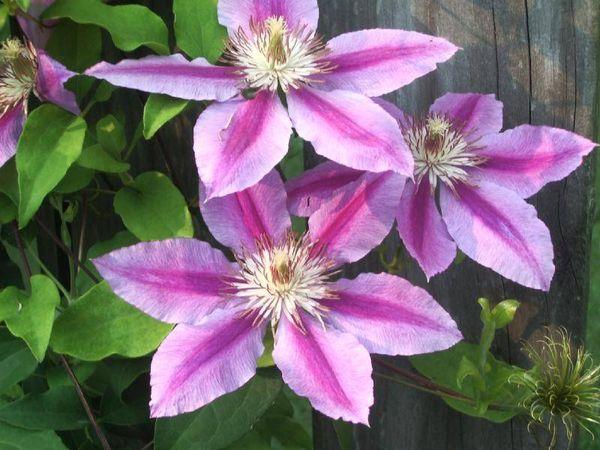
Landing
For Clematis Nelly Moser to grow up beautiful, you need to land in accordance with the rules.
Site requirements
Clematis loves when there is good sunlight on the site, but in the middle of the day the shade can protect from the peak of the heat. If the plant is grown in a warm climate, that part of the plot that is located on the east side is better for it.
At the flower, the roots grow strongly in breadth, remaining close to the soil surface.
They need to provide shade during hot times of the day, otherwise they are in danger of overheating.
It is undesirable for the place where Clematis Nelly Moser grows to be blown by strong winds. One of the reasons for this is the fragility of the stem. Strong gusts of wind can break it.
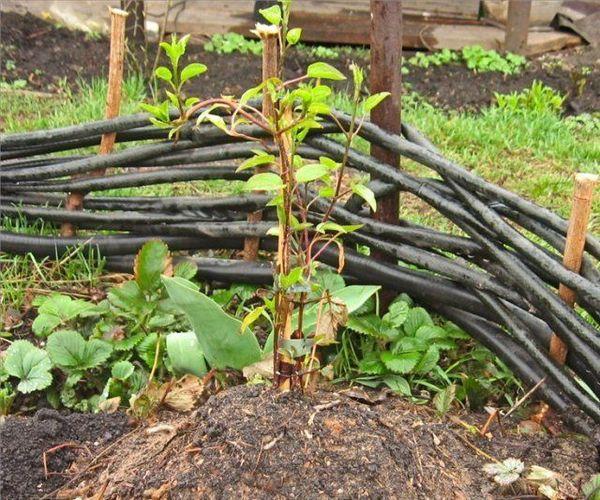
It is not recommended to grow these flowers in the lowlands. The accumulation of precipitation and moisture can have a detrimental effect on the health of Clematis Nelly Moser. You also need to make sure that there is no roof slope next to the landings, from which rainwater can drain onto it. In this case, the flower may die.
Timing
The time chosen for planting depends on the climatic conditions at that location. In the northern regions, this is done from late April to early May. Clematis is allowed to land in September.
In places with a warmer climate, the best time to plant is early October.
Selection and preparation of soil
For this Clematis Nelly Moser it is recommended to use fertile soil mixed with humus. It is important that the soil is loose.
Landing scheme
The distance between plants should be at least a meter. It is recommended to purchase Clematis seedlings in pots. If, when planting, the root is inside an earthen coma, it will better take root in a new place.
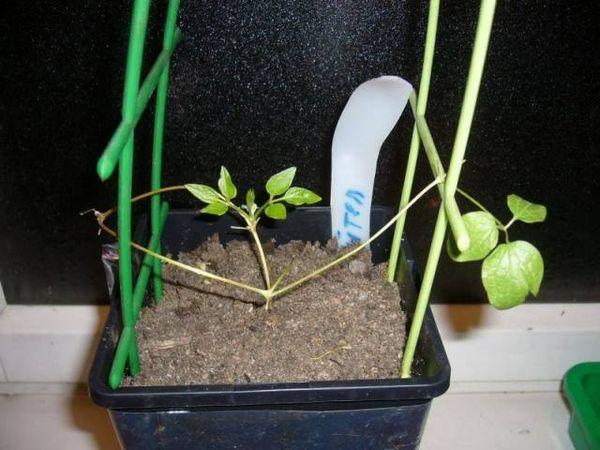
For the vine, you need to prepare a hole 60 centimeters deep. A drainage layer is poured over 15 centimeters. Then you need to add the nutrient mixture. It consists of the following elements:
- two buckets of peat;
- 500 grams of ash;
- two buckets of humus;
- 200 grams of complex fertilizer;
- for heavy earth you need a bucket of sand.
This composition is poured into the hole a month before Clematis is planted there.
When planting, part of the nutrient mixture is removed from the prepared hole so that the root of the seedling can be placed in the hole. At the same time, a small mound is poured at the bottom, and the root is gently spread around it. Sprinkle abundantly with water, then sprinkle the root with sand and nutrient mixture.
The neck should be 5-8 centimeters below the ground surface. When planting, a peg is installed, to which Clematis is tied. The soil is mulched with peat.
Care
The rules for caring for Clematis Nelly Moser are standard, but in order to get a beautifully flowering plant, they must be followed exactly.
Watering
If there is no hot and dry weather, watering is sufficient once a week. It should be taken into account that the roots of Clematis Nelly Moser are located close to the surface of the soil. Therefore, it is not necessary to use a large volume of liquid. Watering is performed in the morning. On this day, in the evening, the soil can be mulched.
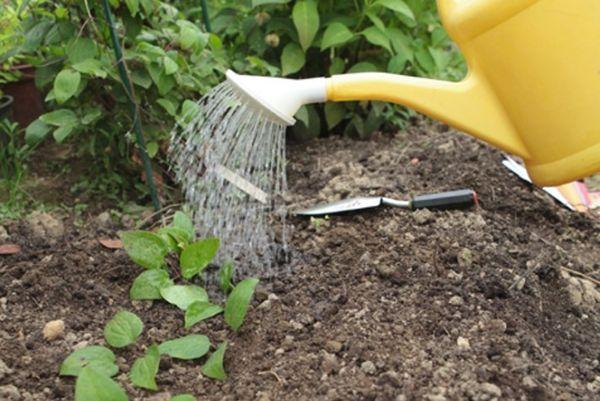
Top dressing
At the initial stage, in the spring, organic fertilizing is performed. For this, an infusion obtained from a mixture of mullein and chicken droppings is suitable. To prepare it, it is enough to stir 1 liter of slurry in a bucket of water. The mixture is poured under the root of the flower.
When bud formation begins, a mixture of potassium and phosphorus fertilizers, taken in equal parts of 60 grams, is used for this purpose. It is repeated immediately after flowering ends.
Trimming group
Clematis Nelly Moser belongs to the second pruning group. To prepare for winter, the plant is cut to half the height. The procedure consists of two stages:
- After the first wave of flowering ends, last year's faded shoots are pruned.
- When the second wave is completed, young, faded shoots are pruned.

Shelter for the winter
If the soil is expected to freeze to a depth of 5 centimeters or more, then special measures must be taken for shelter during frost.
The root system of Clematis Nelly Moser must be covered with peat, creating a small mound.
Lianas are rolled up in a ring and covered with agrofibre or pine branches.
Pests and diseases
In order for this flower to please the eye, it should not hurt. Here's what you need to do to protect it.

Wilt
Clematis Nelly Moser is vulnerable to wilt disease. If an infection has occurred, the diseased plant must be destroyed. After that, it is necessary to carry out tillage. To do this, it is treated with copper oxychloride or copper sulfate.
Powdery mildew
A powdery mildew remedy for this flower can be a soda solution. You can also use a composition of 30 grams of copper sulfate and 300 grams of laundry soap, dissolved in one bucket of water.
Rust
To fight rust, it is enough to treat the flower with a 2% solution of Bordeaux liquid.
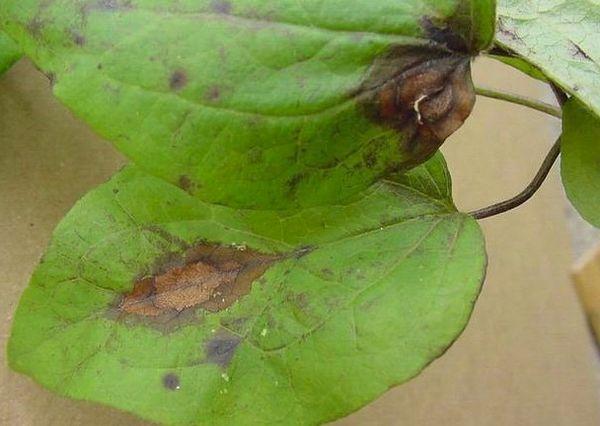
Gray rot
With this disease, Clematis Nelly Moser can be saved by treating it with Fundazole solution.
Ascochitosis
With this disease, dark spots appear on the leaves, they become brittle and easily damaged. If found, it is necessary to remove the damaged leaves and treat the flower with a solution of copper sulfate.
Loosening and mulching
Loosening is necessary after each watering. It is made at a shallow depth in order not to damage the roots. For mulching, peat or sawdust is poured around the vines. This is important to reduce evaporation and to protect the roots.
Reproduction
Using seeds is the most time consuming method. There is a high risk of accidental root damage when dividing roots. The rest of the methods suggested here are considered the most effective.
Dividing the bush
To do this, you need to use a vine at the age of 6 years. Having dug out the root, it is cut into pieces. Each of them should have a sprout with a bud on the root collar.
Pinning in spring shoots
When using this method, woody old shoots of vines are used. Where there is a knot, they are pinned to the ground and a little soil is added. As they grow, add some more earth. In the fall, a new seedling can be planted in a permanent place.
Layers
This option is used in the fall. A strong bud is found on the vine. Above it, remove all the leaves. The cuttings are placed in the groove and covered with peat. Fallen leaves are poured on top. In the spring, watered with abundant water. By autumn, a full-fledged seedling will grow from the cut.

Cuttings
This is started when the buds begin to tie. Shoots are cut, then divided into several parts. Each of them should have a node. Half of the leaves are cut off. The cuttings are placed in a nutritious substrate and placed in a warm place. Constant watering is required. After a year, they can be planted in open ground.
Seeds
Seeds are obtained from flowers and planted in open ground at a time when the weather is warm. Before planting, they must be placed in water for three days. Seedlings from Clematis will appear no later than 2 months later.
Use in landscape design
One of the ways to decorate a private home is to plant Clematis next to viburnum or lilacs. This vine looks good next to conifers. The flower can be used as a decorative element for vertical designs.

Reviews
Lilia 39 years old, Lipetsk
Planted along the wire mesh at the border of the plot. A living wall of incredible beauty appeared. I will try to prune, after which the inflorescences will grow thicker.
Anna 46 years old, Cherepovets
Clematis Nelly Moser has been growing for the fifth year. The flower is unpretentious and does not require special care. I perform pruning twice a season.
Oksana 50 years old, Volgodonsk
This flower grows at the gate. Not only decorates the entrance, but also creates a mood. I constantly see it blooming. It can withstand frost well, but you must remove it from the support. During the season, I do several dressings in order to bloom even better.
Tamara 29 years old, Saratov
Four years ago, a neighbor gave it to me. Clematis' star flowers are large and beautiful, but at the same time unobtrusive. Well tolerates winter. Once it was not covered, but it overwintered and bloomed as before.
